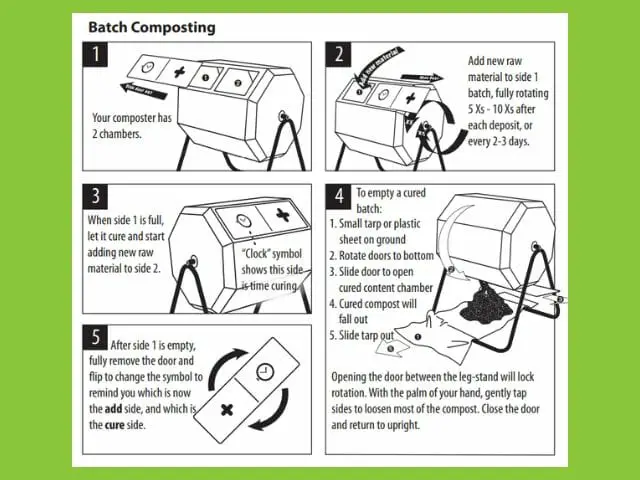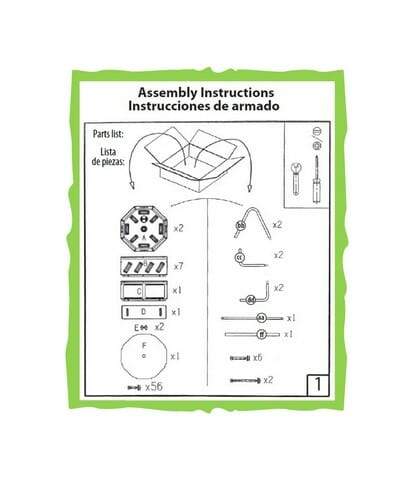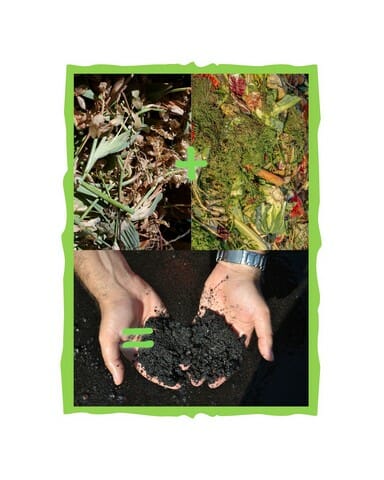Last Updated on June 15, 2023 by Grow with Bovees
Using traditional heap/pile methods for making nutrient rich high quality compost at home, as you will be aware, can take more than four months!
Who’s got time to wait around for that?
It certainly frustrated me….hence
(i) My in-depth investigations into alternatives….
(ii) My subsequent conversion into a ‘yimby tumbling composter’
(iii) The reason I was voted by the Bovees team to write this yimby compost tumbler review.
Basically what you need is a proven piece of apparatus called a tumbler composter.
Because the right, tried and tested reputable tumbling composter can get the job done in as little as 2 weeks!
Such a simple device, to quickly convert waste materials into top quality compost that can compete with that of even the most expertly tended compost pile!
It genuinely astounds me that it wasn’t thought of years ago!
What is a Yimby Tumbling Composter?
Basically, a YIMBY (Yes In My Back Yard) tumbling composter is a type of container with good air circulation holes in it, that you can spin to make compostable material mature faster.

Why Should I Buy an FCMP Tumbler Composter?
When on the shopping trail for the best compost tumblers, you’ll literally be spoilt for choice, given the sea of options available.
But, for us, the ‘Bovees Best Buy’ in terms of household composters, is the FCMP Outdoor IM4000 Tumbling Composter, owing to its robust build quality, and rich set of features.
More on all of those to follow…..but let’s start with the size.
Size
If you have a reasonably large requirement for fast compost, then this particular model from FCMP is ideal, given its massive capacity, 37 gallons in fact – a large size compared to other compost bins on the market.
Build Quality
This FCMP composting gizmo tips the scales at just 27.9 lbs, and is crafted from solid, superior quality BPA free, UV inhibited, 100% post-consumer recycled plastic (polypropylene) – color black.
Made in North America, it measures 36 × 30 × 28 inches, is contact safe, and is made of good quality materials that will not deteriorate when placed directly under the sun.
Adding to this, it is supported by a corrosion resistant galvanized sturdy steel frame.
Yimby Tumbler Composter Color
With most things, color is a matter of aesthetics, but when it comes to your FCMP yimby tumbler composter color there is only one sensible way to go and that is; black.
Why? Because black absorbs the most heat… and heat is what you want.
Recommended Design Requirements
- Ventilation
- Dual chamber facility.
- Easy access to finished material.
What’s So Special About a Yimby Composter Tumbler?
The Yimby Composter boasts its own unique tumbling design, which makes mixing your compost easy, and with little effort.
A great choice for both novice and seasoned gardeners, the 8 side panels offer an optimal octagonal shape for tumbling.
Other special features include; sturdy galvanized steel frame, uv resistance, large openings, adjustable air vents, extra deep fins, two chambers and an integrated removable door.
The easy to use, adjustable air vents help maintain an influx of oxygen for faster compost maturation and a quicker supply of compost product.
The extra deep fins ensure maximum tumbling to help break up clumps and thoroughly mix together all the different types of composting material helping the oxygen get right in amongst the good stuff so that it can do its job..
With the added bonus of a dual chamber design for a constant supply of soil enhancing compost.
The addition of any organic waste and carbon rich materials, such as; kitchen waste, grass clippings and other compost materials to the mix is quite easy, thanks to the integrated removable sliding door made from polypropylene — a material that is known for its excellent flexural strength, and resistance to a wide range of bases and acids.
This ensures a long service life.
How Should You Use a Tumbler with Two Chambers?
You start by adding kitchen waste and other compostable content in one side, rotating five to ten times after each deposit or every two to three days.
When one chamber is full, you start adding kitchen scraps to the other chamber, starting a fresh batch.
While one side cures to produce the finished product for you to scoop out, you can still add to the other side, thereby ensuring an uninterrupted supply of rich healthy fertilizer.

How Do You Get the Finished Compost Out of the Tumbler?
To empty ready compost, you simply spread a small tarp or sheet on the ground underneath the frame, rotate the doors to the bottom, slide the door of the cured compost chamber to open, and the cured compost product will fall out directly onto the tarp or plastic sheet below.
How to Install the Yimby Tumbler
The box comes with everything you will need to easily complete the construction instantly, including a screwdriver!
The assembly process of the Yimby composter is pretty straightforward, but an extra set of hands will speed up the process.
The Yimby compost tumbler comes with detailed, trustworthy installation instructions, so it’s hard to get things wrong.

Where Should I Install My FCMP Yimby Tumbler?
Before getting started with the installation process, you need to make sure you decide on the best location for your new compost tumbler.
Even though you can site your new all singing/all dancing compost bin anywhere you see fit, it can get heavy once loaded with scraps, so it may be challenging to move around at a later time.
The ideal location, therefore, would be in close proximity to your garden or anywhere else that you will be regularly transporting material from.
Once the desired location for your Yimby tumbler has been decided upon, remember to make sure that it is placed placed on a flat surface for ultimate ease of tumbling
Easy access and a generous surrounding area is also an advantage so that you have enough room to rotate the tumbler.
Ideally you should also make sure the location is in direct sun to help cook the compost.
What to Put in the Yimby Tumbler?
Using a tumbling composter speeds up the composting process, but at the end of the day, the actual quality of the finished compost depends on what you put into it.
Organic materials are the most basic things you can put in the Yimby composter, but it’s worth mentioning that not all organic materials are safe.
Materials that are safe to use include; green waste, grass clippings, tree leaves, citrus fruit waste, plant pruning’s, teabags, used coffee filters, vegetable peelings, old bread, printer paper, cardboard, vegetarian animal manure (horses, cows, rabbits, hamsters, etc.), wood shavings or sawdust, and most disease-free yard waste.
What Should I NOT Put in the Yimby Tumbler Composter?
Non-vegetarian manure – manure from animals that eat meat and humans should not be added to the Yimby tumbler composter. This manure however can be composted, but you should be aware that these types of feces can be rich in pathogens that can spread disease.
Noxious weeds – noxious weeds such as Canada thistle and creeping Charlie can be composted, but in most cases will just reemerge as smaller pieces of plant material. Composting invasive weeds that you have pulled up may spread them to areas of your garden where you add the compost.
Color newspaper – most color newspapers or even magazines nowadays are printed with a soy-based ink, which is deemed safe to compost. The problem however is not the soy-based ink, but the thin layer of wax coating. This wax is harmless, but can prevent the color paper from composting well.
Food scraps that contain some animal products – food scraps are a welcome addition to any compost concoction, but those that contain dairy, eggs, fats, oil can attract nighttime scavengers such as rats, racoons and opossums. But since the Yimby compost tumbler is fully closed, you won’t have to worry about pests getting into the compost product inside.
What Is the Right Balance of Ingredients To Put in the Chambers of a Tumbler Composter?
As with making compost in a normal compost bin, the right balance is a perfect mix of greens and browns, so add more greens if the compost is too dry, or add some browns if the compost is too wet.
The Yimby compost tumbler comes with great ventilation pockets for excellent aeration, but our compost experts recommend adding scrunched up bits of cardboard to the compost to increase the number of air pockets.
To encourage the right enzymes in your tumbler from the get go, you can use a compost activator/starter such as the Jobe’s Organics Starter or SCD Probiotics All Seasons Bokashi Starter. You can read our Best Compost Accelerator/Activator guide and reviews to ease your buying decision.

How Long Does It Take for Compost To Break Down in a Tumbler Composter?
This will vary depending upon what material you put into it , but;
(i) if you turn it regularly (at least 5- 6 times every 2 – 3 days)
(ii) if you keep the correct brown/green and moisture ratio
(iii) given the right hot, sunny conditions
…….. then you can end up with high quality compost in as little as two weeks (!)
That’s even less time than it takes to make compost tea!
It is best to keep tabs on the compost every two days to ensure that the mix is getting hot, which means that the organisms are multiplying, and doing what they’re supposed to do.
We recommend also investing in a compost thermometer so that you have a trustworthy method of monitoring the progress inside each of the chambers.
You can then turn the Yimby compost tumbler up to 10 times or so every two to three days to mix the materials, and keep the decomposition process active.
Obviously the gallon capacity will also affect the time it takes for the compost to mature, but that’s where the big advantage of the two separate chambers comes in.
Should I Add Water To My Tumbler Composter?
Depending on what compostable material you put in your tumbler to start with, the moisture level will vary.
Also, the humidity of the surrounding air will have an effect, due to constant ventilation through the air vents.
To check the moisture content of your compost, you can squeeze a handful of compost to check whether it is wet or drying out. If it feels dry, then add a bit of water, but not too much, and if it feels like a damp sponge, then the moisture level is fine.
How Often Should I Turn My Tumbler Composter?
There is no exact timing for this, but if the compost feels hot, or you have a compost thermometer to inform you, then it’s probably ready to be turned.
According to our research, the minimum temperature to reach before turning is 100 Fahrenheit (37.78 °C).
Once it has been turned, the temperature should increase for several days before dropping again.
How Do I Know When My Compost Is Ready ?
Keep up the turning of the tumbler composter until the temperature stops increasing.
When the pile stops getting hot, then it is almost finished.
By mixing up the ingredients more frequently, more oxygen is generated for the microbes, resulting in faster heating and maturing and therefore an overall faster composting process, speed being the most sought after of composter features.
What Happens if You Don’t Turn Your Tumbler Composter?
Regular turning allows proper air circulation, and keeps the aerobic microorganisms within your tumbler aerated with plenty of oxygen.
If you don’t turn your compost regularly, the microorganisms that need oxygen will run out of oxygen, and the pile will turn anaerobic.
You will know immediately if this has happened, due to its unpleasant odor.
Another reason for having compost that is easy to turn!
Conclusion to my Yimby Tumbler Composter Review
Basically, if you’re still performing the daunting task of digging and aerating your compost heap by hand, then investing in a YIMBY Tumbler Composter made by such a reputable, tried and tested company as FCMP (Forest City Models & Patterns), is a no-brainer.
If you are serious about being a composter, simply follow our tips above you will end up with gallons of compost product of a professional quality to enhance your soil and top dressing.
